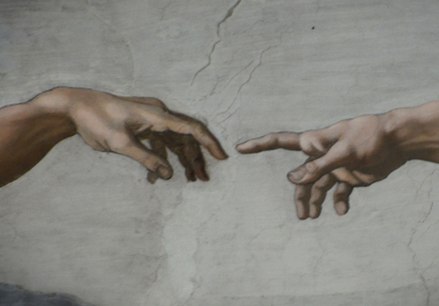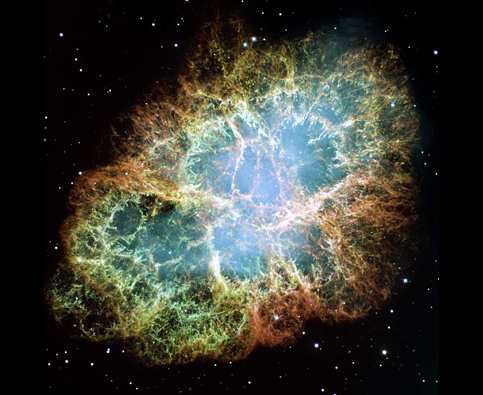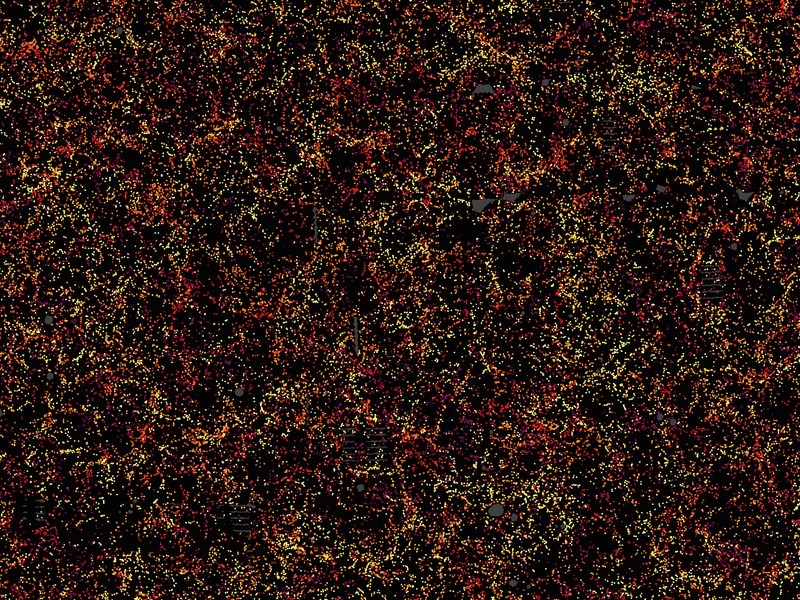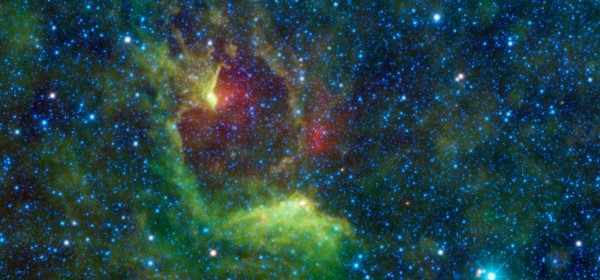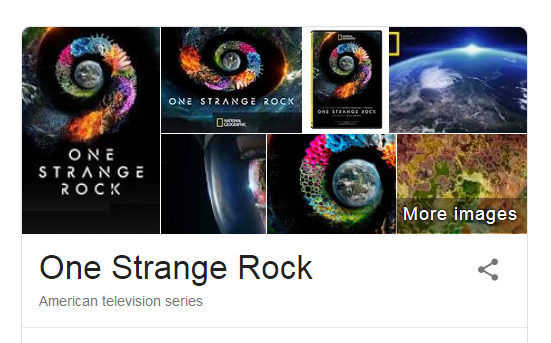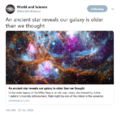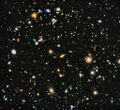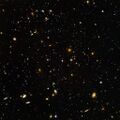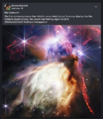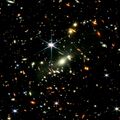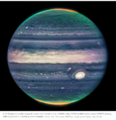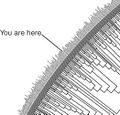Category:Origins of Life: Difference between revisions
Siterunner (talk | contribs) No edit summary |
Siterunner (talk | contribs) No edit summary |
||
| Line 37: | Line 37: | ||
::::* ''https://www.goodreads.com/book/show/14568667-the-stardust-revolution'' | |||
::::* ''http://www.cbc.ca/books/2012/10/we-are-all-made-of-stardust.html'' | |||
::::* ''http://mpegmedia.abc.net.au/science/podcast/starstuff/starstuff20140716.mp3'' | |||
Revision as of 20:45, 24 June 2020
<addthis />
- Genesis...
- https://en.wikipedia.org/wiki/God
- Life Origins? What Is Life? What Is To Be Alive?
A series of Conversations / Podcasts between Carl Zimmer and eight leading thinkers on the question of what it means to be alive.
What Is Life? was recorded at Caveat in New York and is supported by a grant from Science Sandbox, a Simons Foundation initiative.
'Panspermia'...
Panspermia (from Ancient Greek πᾶν (pan), meaning 'all', and σπέρμα (sperma), meaning 'seed') is the hypothesis that life exists throughout the Universe, distributed by space dust, meteoroids, asteroids, comets, planetoids, and also by spacecraft carrying unintended contamination by microorganisms. Distribution may have occurred spanning galaxies, and so may not be restricted to the limited scale of solar systems.
Panspermia hypotheses propose (for example) that microscopic life-forms that can survive the effects of space (such as extremophiles) can become trapped in debris ejected into space after collisions between planets and small Solar System bodies that harbor life. Some organisms may travel dormant for an extended amount of time before colliding randomly with other planets or intermingling with protoplanetary disks. Under certain ideal impact circumstances (into a body of water, for example), and ideal conditions on a new planet's surfaces, it is possible that the surviving organisms could become active and begin to colonize their new environment. At least one report finds that endospores from a type of Bacillus bacteria found in Morocco can survive being heated to 420 °C (788 °F), making the argument for panspermia even stronger. Panspermia studies concentrate not on how life began, but on methods that may distribute it in the Universe...
'Life finds a way', the 'tiny little ones', microrganisms, spores/fungi... traveling thru space and 'seeding'
······································
- Season One, Episode 4 -- Genesis
Created from Stars
Hubble peers out to the beginnings of the universe...
○
Subcategories
This category has the following 2 subcategories, out of 2 total.
A
- Astrobiology (3 P, 18 F)
B
Pages in category "Origins of Life"
The following 10 pages are in this category, out of 10 total.
Media in category "Origins of Life"
The following 63 files are in this category, out of 63 total.
- 1.2-million-galaxies-map-slice.jpg 800 × 600; 326 KB
- 2001 pic3.jpeg 800 × 450; 65 KB
- 29 Days on the Edge w James Webb.png 527 × 461; 215 KB
- 43245326 2662602463753498 4405976459546460160 o.jpg 1,598 × 1,200; 163 KB
- 92493695 2846246678763162 7097792584625422336 o.jpg 1,041 × 590; 70 KB
- A Big Picture on an Election Day 11-3-2020.jpg 442 × 712; 86 KB
- Above Earth .jpg 2,000 × 1,500; 278 KB
- All Alone In the Night.png 831 × 426; 275 KB
- Aurora startime.png 552 × 343; 458 KB
- Backbone of Night - The Milky Way by Andrew McCarthy 2023.png 796 × 1,722; 2.3 MB
- Creation-of.jpg 439 × 306; 26 KB
- Dark sky by Jack Fusco.jpg 800 × 540; 119 KB
- Edwin Hubble announces existence of other galaxies - 1924.jpg 428 × 640; 76 KB
- Ergo, stars are, we are, older than we thought.png 689 × 663; 448 KB
- Hubble - Wikipedia.jpeg 800 × 600; 82 KB
- Hubble carina star births.jpg 1,050 × 590; 143 KB
- Hubble crab nebula.jpg 483 × 395; 160 KB
- Hubble NGC 2775.jpg 800 × 581; 69 KB
- Hubble NGC-1376-22811500-2560-1705.jpg 2,560 × 1,705; 105 KB
- Hubble spots a celestial bauble.jpg 1,280 × 995; 266 KB
- Hubble stars.jpg 964 × 405; 258 KB
- Hubble STS-125 May 17 EVA.jpg 4,288 × 2,843; 1.44 MB
- Hubble tadpole galaxy.jpg 1,050 × 591; 82 KB
- Hubble Ultra Deep Field 2014-20140603 NASA-HS201427a-.jpg 1,024 × 935; 316 KB
- Hubble ultra deep field high rez 1024px-.jpg 1,024 × 1,024; 193 KB
- I am a significant... speck of stardust.jpg 605 × 250; 33 KB
- James Webb - Unfold the Universe - ESA January 2022.png 640 × 444; 304 KB
- James Webb in alignment - 1.jpg 480 × 572; 84 KB
- James Webb in alignment - 2.jpg 480 × 579; 95 KB
- James Webb Telescope Unveils First Image - 1.png 800 × 761; 282 KB
- James Webb Telescope Unveils First Image - 2.png 800 × 824; 418 KB
- Making of Fantastic Fungi.jpg 640 × 360; 62 KB
- Milky Way comparison - 1.png 523 × 306; 337 KB
- Milky Way comparison - 2.png 523 × 299; 326 KB
- Milky Way Map.png 768 × 847; 1.04 MB
- NASA Webb Telescope - Top of Mind.jpg 4,096 × 2,726; 1.98 MB
- NASA Webb Telescope -- Top of Mind.jpg 800 × 532; 86 KB
- Pale-blue-dot.jpg 1,680 × 1,050; 248 KB
- Pandora to be found Exoplanets in Space.png 588 × 630; 488 KB
- Panspermia.jpg 600 × 280; 64 KB
- Pedernal and Milky Way - Photo by David Lancaster.jpg 800 × 569; 333 KB
- Phyto the Green Machine.png 640 × 465; 431 KB
- Plankton story - New Yorker - Oct 2021.jpg 619 × 737; 125 KB
- Prochlorococcus featured at GreenPolicy360.png 497 × 642; 42 KB
- Rho Ophiuchi.png 768 × 891; 1.06 MB
- Star Galaxies Revealed - Origins of Life Mission ESA-NASA.jpg 782 × 960; 139 KB
- Stardust Origins.jpg 800 × 453; 48 KB
- Starstuff we are.jpg 800 × 324; 66 KB
- Stephen Hawking-Genius-2016.jpg 250 × 339; 27 KB
- The Milky Way-GrandeMosaic120DegreesLONG.jpg 3,512 × 650; 2.1 MB
- The Milky Way-Mosaic120DegreesL-800x148.jpg 800 × 148; 109 KB
- The Milky Way.jpg 680 × 507; 88 KB
- Tiny Plankton - via The Guardian.jpg 591 × 181; 59 KB
- We are made of star stuff -- carl sagan.jpg 1,200 × 750; 722 KB
- We are made of star stuff 2-- carl sagan.jpg 800 × 500; 327 KB
- We are stardust.jpg 600 × 600; 53 KB
- We are Stardust.jpg 640 × 538; 39 KB
- Webb - Phantom Galaxy M74.jpg 680 × 389; 76 KB
- Webb 1.jpeg 800 × 800; 74 KB
- Webb Telescope construction completed-Nov2016.jpg 534 × 800; 100 KB
- Webb Telescope observes Jupiter - Aug 2022.png 768 × 795; 779 KB
- You are here on the cladogenetic tree.jpg 1,048 × 1,002; 230 KB

